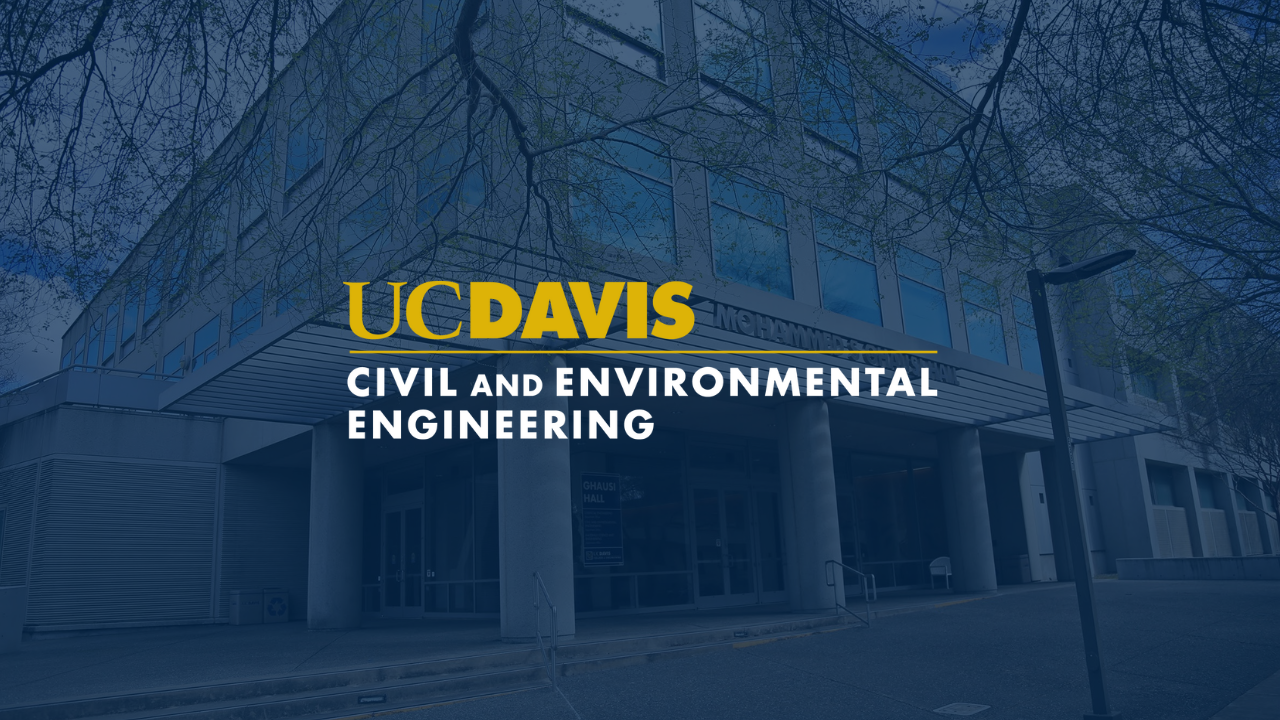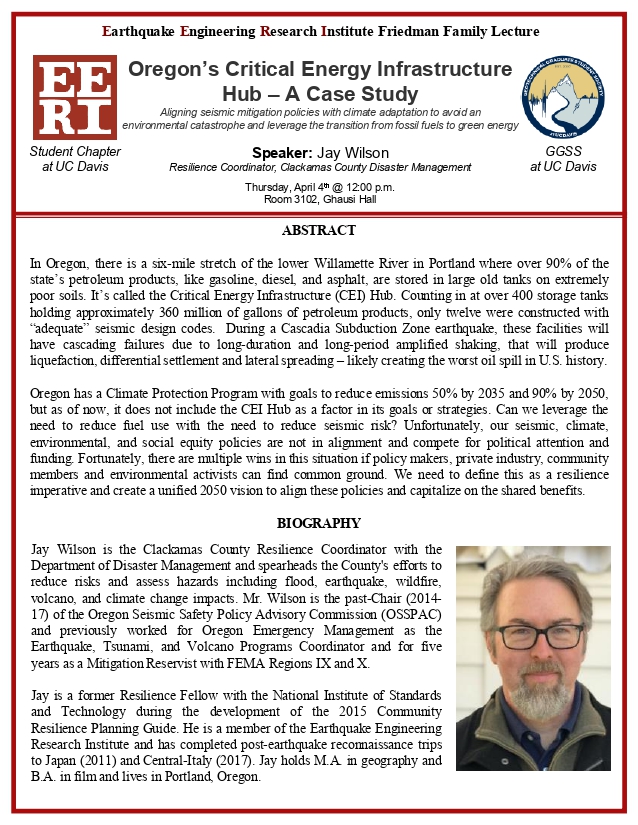
Event Date
ABSTRACT
In Oregon, there is a six-mile stretch of the lower Willamette River in Portland where over 90% of the state’s petroleum products, like gasoline, diesel, and asphalt, are stored in large old tanks on extremely poor soils. It’s called the Critical Energy Infrastructure (CEI) Hub. Counting in at over 400 storage tanks holding approximately 360 million of gallons of petroleum products, only twelve were constructed with “adequate” seismic design codes. During a Cascadia Subduction Zone earthquake, these facilities will
have cascading failures due to long-duration and long-period amplified shaking, that will produce liquefaction, differential settlement and lateral spreading – likely creating the worst oil spill in U.S. history. Oregon has a Climate Protection Program with goals to reduce emissions 50% by 2035 and 90% by 2050, but as of now, it does not include the CEI Hub as a factor in its goals or strategies. Can we leverage the need to reduce fuel use with the need to reduce seismic risk? Unfortunately, our seismic, climate,
environmental, and social equity policies are not in alignment and compete for political attention and funding. Fortunately, there are multiple wins in this situation if policy makers, private industry, community members and environmental activists can find common ground. We need to define this as a resilience imperative and create a unified 2050 vision to align these policies and capitalize on the shared benefits.
BIOGRAPHY
Jay Wilson is the Clackamas County Resilience Coordinator with the Department of Disaster Management and spearheads the County's efforts to reduce risks and assess hazards including flood, earthquake, wildfire, volcano, and climate change impacts. Mr. Wilson is the past-Chair (2014-17) of the Oregon Seismic Safety Policy Advisory Commission (OSSPAC) and previously worked for Oregon Emergency Management as the Earthquake, Tsunami, and Volcano Programs Coordinator and for five years as a Mitigation Reservist with FEMA Regions IX and X. Jay is a former Resilience Fellow with the National Institute of Standards and Technology during the development of the 2015 Community Resilience Planning Guide. He is a member of the Earthquake Engineering Research Institute and has completed post-earthquake reconnaissance trips to Japan (2011) and Central-Italy (2017). Jay holds M.A. in geography and B.A. in film and lives in Portland, Oregon.

